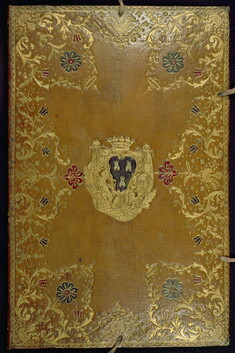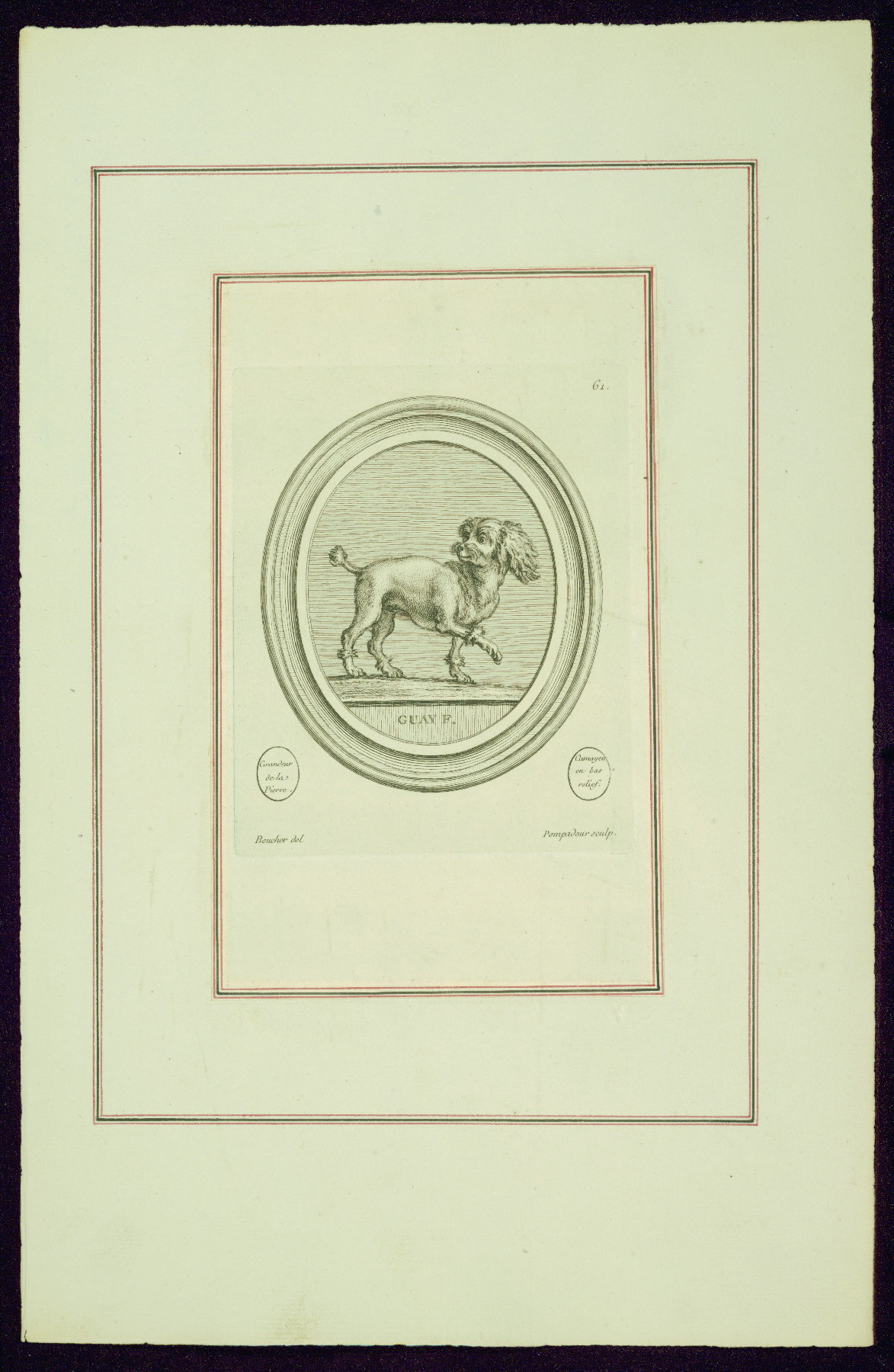Portrait of Madame de Pompadour’s Dog (Bébé?), from Madame de Pompadour's "Suite of Prints"
The cameo portrait of Madame de Pompadour’s pet spaniel is lost; this print is our only record of what the gem looked like. The image captures a fleeting moment: the dog pauses mid-trot with head turned and tail raised, as if she has been startled. In the 18th century, gem carving was understood to be an especially permanent and durable medium because of the strength of stone and the survival of so many carved gems from antiquity. The depiction of this ephemeral subject in a durable medium is perhaps a witty commentary on carved gems and their typical seriousness.
Provenance
Provenance (from the French provenir, 'to come from/forth') is the chronology of the ownership, custody, or location of a historical object. Learn more about provenance at the Walters.
Jeanne Antoinette Poisson, Marquise de Pompadour, ca. 1755. Purchased by Henry Walters, Baltimore, 1895; by bequest to Walters Art Museum, 1931.
Exhibitions
| 2016 | Madame de Pompadour, Patron and Printmaker. The Walters Art Museum, Baltimore. |
Geographies
France, Paris (Place of Origin)
Measurements
Folio H: 14 9/16 × W: 9 3/8 in. (37 × 23.8 cm)
Credit Line
Acquired by Henry Walters, 1895
Location in Museum
Not on view
Accession Number
In libraries, galleries, museums, and archives, an accession number is a unique identifier assigned to each object in the collection.
In libraries, galleries, museums, and archives, an accession number is a unique identifier assigned to each object in the collection.
92.548.67
Do you have additional information?
Parent Object



